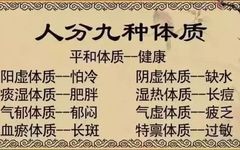
Click the blue text above to follow us

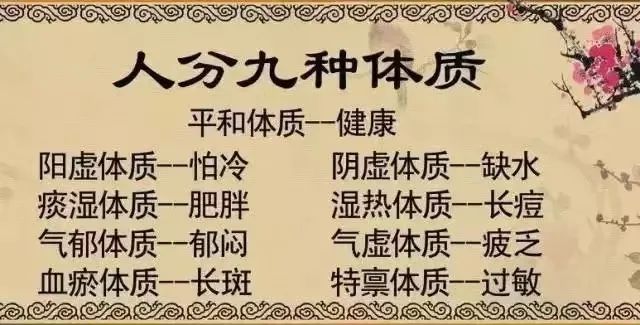
We often say that some people have good constitutions while others have poor ones. The constitution referred to in daily conversation differs from that in Traditional Chinese Medicine (TCM).
In TCM, constitution refers to the relatively stable characteristics manifested in morphology, physiological functions, and psychological activities, formed on the basis of innate endowment and acquired factors throughout life.
“Form and spirit are both present” is a fundamental characteristic of existence and health. As Zhang Jiebin stated in Classifications of Zangxiang: “Both form and spirit must be present to constitute a whole.” A robust form indicates a vigorous spirit, while a frail form indicates a weak spirit.
Constitution consists of three aspects: morphology, physiological function, and psychological state.
The morphology primarily includes characteristics such as body weight, height, skin thickness, and color. Among these, body weight is the most representative. For instance, Ling Shu: Reversal of Weight and Ling Shu: Loss of Defensive Qi classify individuals into fat and thin based on body type, with the obese constitution further categorized into three types: Gao type, Zhi type, and Rou type.
Physiological function reflects the functions of the organs, meridians, and the essence, qi, blood, and body fluids, including heart rate, rhythm, respiration, speech, appetite, taste, body temperature, urination, reproductive functions, menstruation, sleep, and sensory functions, all of which are manifestations of constitutional physiological functions.
The psychological characteristics fall under the TCM category of “Shen” (spirit), primarily reflected in personality, temperament, and character.
Evaluation of Constitution
The evaluation of constitution is conducted from the following aspects: body morphology, physiological function level, physical fitness and exercise ability, psychological development level, and adaptability.
The ideal constitution should manifest in the following aspects: first, good development with a balanced body shape and appropriate weight; second, abundant energy, rosy complexion, clear senses, strong voice, solid teeth, good sleep, normal urination, and a gentle, even pulse; third, sensitive perception and agile movements; fourth, optimistic emotions, strong will, and a positive attitude; fifth, strong adaptability with a robust ability to resist disturbances, adverse stimuli, and diseases.
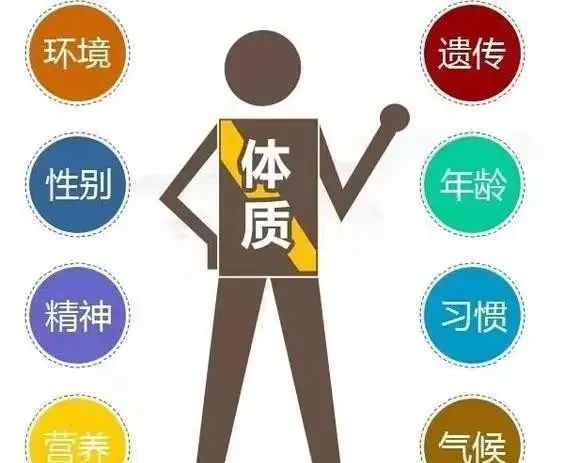
Characteristics of Constitution
Constitution has the following characteristics: congenital heritability, postnatal adjustability, relative stability, unity of form and spirit, and diversity. Congenital inheritance is the foundation for the formation and development of constitution, but it can be gradually adjusted by postnatal influences; constitution is relatively stable and can be continuously measured, but it can also dynamically change with age and environmental stimuli; the unity of form and spirit is influenced by region and culture, exhibiting group convergence characteristics; and constitution has diverse differences.
Basic Content of Constitution Theory
(1) Classification of TCM Constitution
Different classification methods yield different types of constitution. Ling Shu: Yin and Yang of Twenty-Five People classifies constitution based on the characteristics of the five elements into Wood type, Fire type, Earth type, Metal type, and Water type; Ling Shu: Tong Tian classifies constitution based on Yin and Yang attributes into Tai Yin type, Shao Yin type, Yang type, Shao Yang type, and Yin-Yang Harmonious type; Ling Shu: Discussion on Courage classifies constitution based on behavioral characteristics into Warrior and Coward, among others. Additionally, there are descriptions of different classifications such as longevity and short life, rigidity and flexibility, bitterness and pleasure. Currently, commonly used classifications include Yin-Yang classification and the nine common constitution classification method.
1. Yin-Yang Classification and Its Characteristics
(1) The Yin-Yang Harmonious Constitution is a type characterized by coordinated functions. Its features include: strong body, moderate weight; complexion and skin tone are bright and subtle; moderate appetite, regular urination; tongue is rosy, pulse is gentle and even; bright eyes, cheerful and easy-going personality; peaceful sleep, abundant energy, quick reactions, agile thinking, and great work potential; strong self-regulation and adaptability.
Individuals with this constitution are less susceptible to external pathogens and rarely fall ill. Even if they do, it is usually a superficial or excess condition that is easy to treat and recover from quickly, or they may recover without medication. If postnatal care is appropriate, without violent injuries, chronic diseases, or poor lifestyle habits, their constitution is unlikely to change, making them prone to longevity.
(2) The Excess Yang Constitution refers to a type characterized by excitement, heat, and hyperactivity. Its features include: moderate or slightly thin body, but relatively strong; complexion is often slightly red or slightly dark, or oily skin; larger appetite, faster digestion; stool tends to be dry, urine tends to be yellow; usually sensitive to heat and prefer coolness, or slightly elevated body temperature, prone to sweating with activity, enjoys drinking water; lips and tongue are slightly red, thin yellow coating, pulse is often slippery and rapid; extroverted personality, enjoys movement, strong-willed, impatient, and poor self-control; abundant energy, agile movements, quick reactions, and strong libido.
Individuals with this constitution are prone to heat-related conditions and often present with heat or excess symptoms, and are likely to develop dryness and damage Yin; skin is prone to sores; internal injuries often show signs of excess heat or Yang hyperactivity, or combined with Yin deficiency; prone to dizziness, headaches, palpitations, insomnia, and bleeding.
(3) The Excess Yin Constitution refers to a type characterized by inhibition, coldness, and inactivity. Its features include: moderate or slightly overweight body, prone to fatigue; complexion is pale with little luster; smaller appetite, weaker digestion; usually sensitive to cold and prefer warmth, or slightly lower body temperature; lips and tongue are pale, pulse is often slow; introverted personality, prefers stillness, easily startled; weaker energy, slow movements, slower reactions, and weaker libido.
Individuals with this constitution are prone to cold and dampness, often presenting with cold or deficiency symptoms; superficial symptoms can easily penetrate to the interior; prone to frostbite in winter; internal injuries often show signs of excess Yin or Yang deficiency; prone to damp stagnation, edema, phlegm retention, and blood stasis.
2. Nine Common Constitution Classification Method and Its Characteristics (The Chinese Association of Traditional Chinese Medicine published the Standards for Classification and Judgment of TCM Constitution on April 9, 2009, which is the first technical document guiding and standardizing TCM constitution research and application in China.)
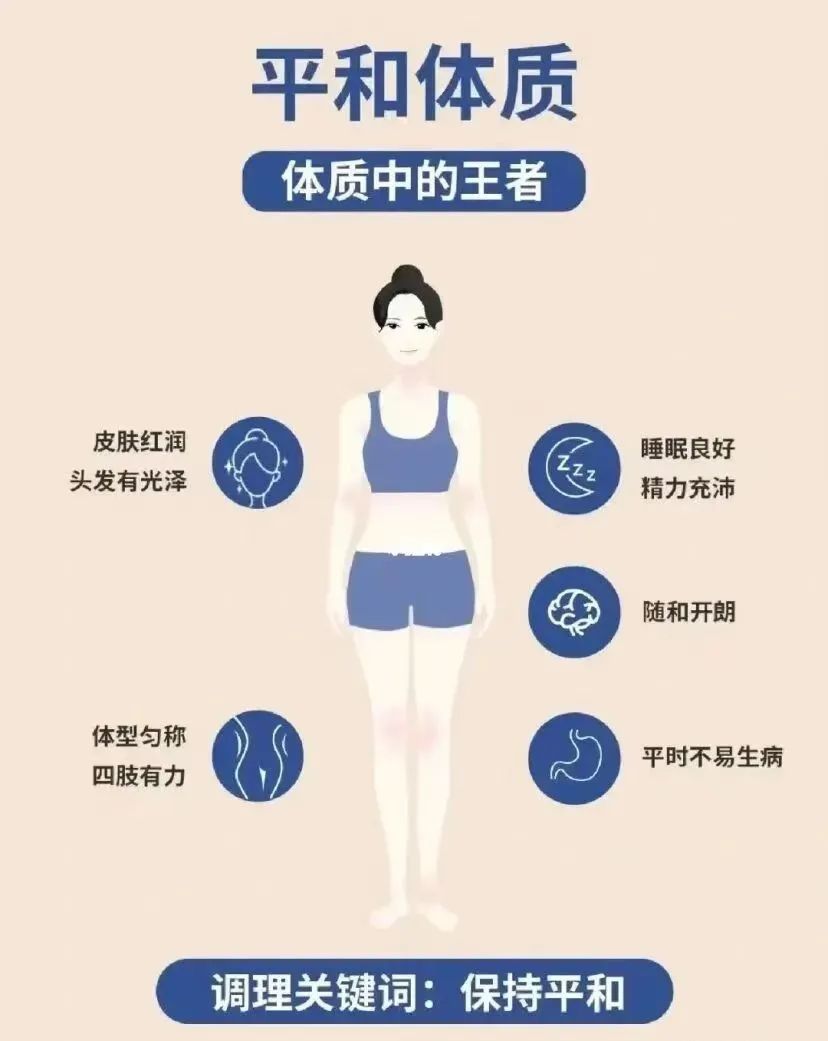
(1) Harmonious Constitution (Type A) Overall characteristics: Harmonized Yin, Yang, Qi, and Blood, with moderate body shape, rosy complexion, and abundant energy as the main features.
Body characteristics: Well-proportioned and robust.
Common manifestations: Rosy complexion and skin, thick and shiny hair, bright eyes, clear nasal passages, rosy lips, not easily fatigued, abundant energy, tolerant of cold and heat, good sleep, normal appetite, normal urination, tongue is pale red with thin white coating, pulse is gentle and strong.
Psychological characteristics: Easy-going and cheerful personality. Disease tendency: Rarely falls ill. Adaptability to external environment: Strong adaptability to natural and social environments.
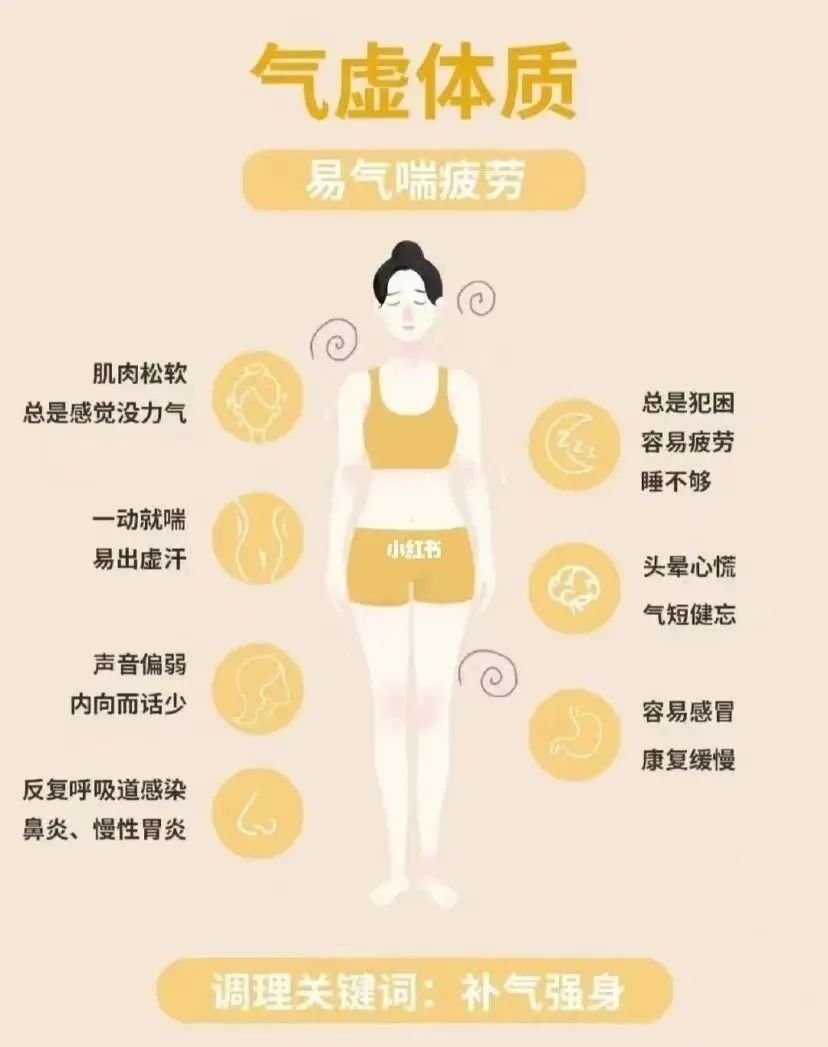
(2) Qi Deficiency Constitution (Type B) Overall characteristics: Insufficient vital energy, primarily characterized by fatigue, shortness of breath, and spontaneous sweating. Body characteristics: Soft and weak muscles.
Common manifestations: Weak voice, shortness of breath, easily fatigued, lack of energy, prone to sweating, tongue is pale red with tooth marks, pulse is weak.
Psychological characteristics: Introverted personality, dislikes taking risks.
Disease tendency: Prone to colds, organ prolapse, etc.; slow recovery after illness. Adaptability to external environment: Poor tolerance to wind, cold, heat, and dampness.
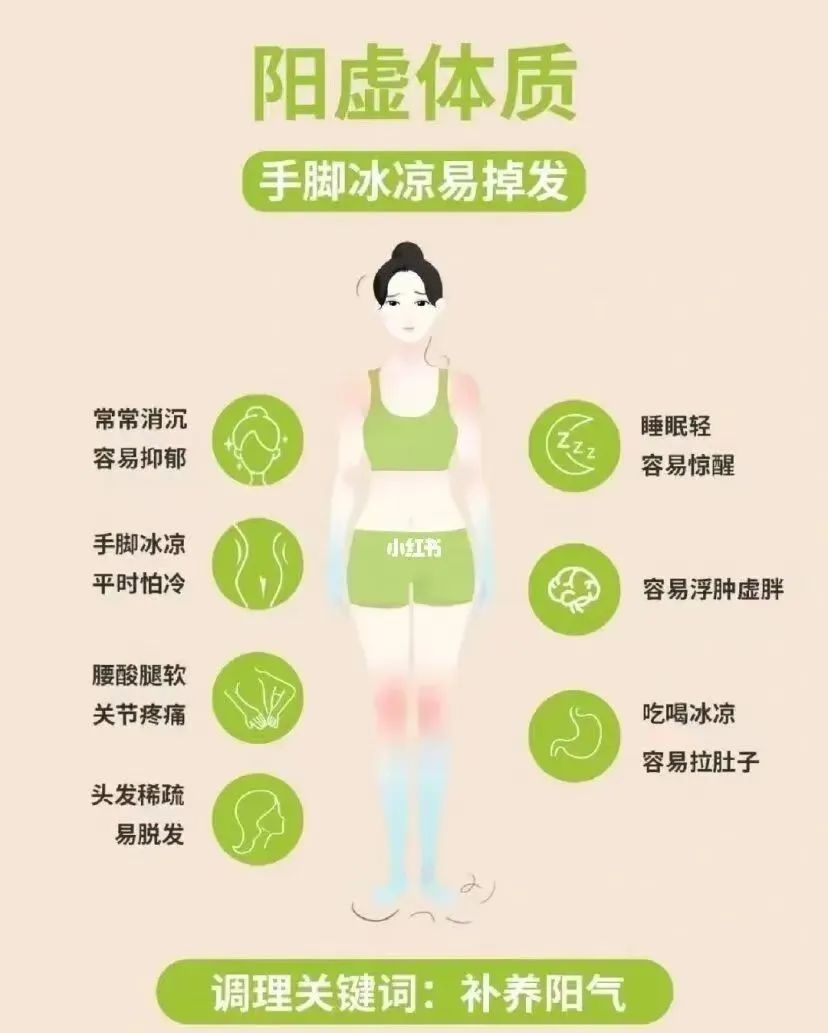
(3) Yang Deficiency Constitution (Type C) Overall characteristics: Insufficient Yang energy, primarily characterized by sensitivity to cold, cold hands and feet. Body characteristics: Soft and weak muscles.
Common manifestations: Generally sensitive to cold, cold hands and feet, prefers warm food, lack of energy, tongue is pale and swollen, pulse is deep and slow.
Psychological characteristics: Often calm and introverted personality.
Disease tendency: Prone to phlegm retention, swelling, diarrhea, etc.; easily affected by cold. Adaptability to external environment: Tolerates summer but not winter; sensitive to wind, cold, and dampness.
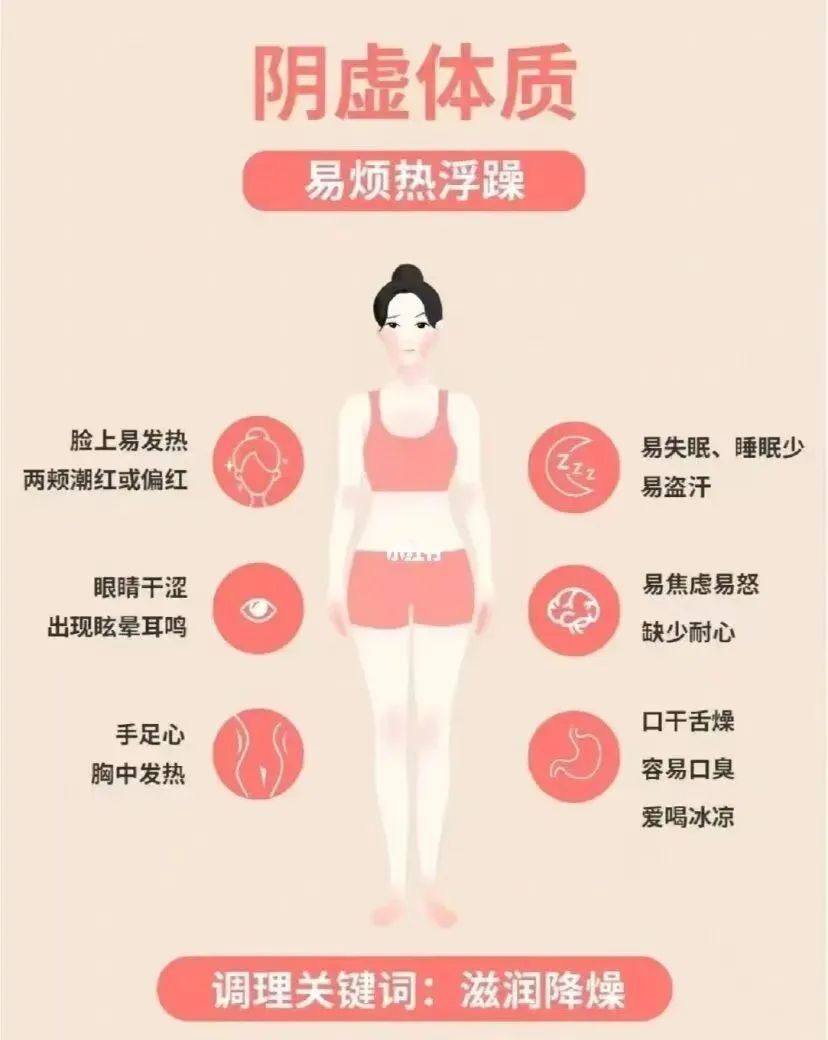
(4) Yin Deficiency Constitution (Type D) Overall characteristics: Insufficient Yin fluids, primarily characterized by dry mouth and throat, heat in hands and feet. Body characteristics: Generally thin.
Common manifestations: Heat in hands and feet, dry mouth and throat, slightly dry nose, prefers cold drinks, dry stools, tongue is red with little moisture, pulse is thin and rapid.
Psychological characteristics: Impatient, extroverted, and lively personality.
Disease tendency: Prone to deficiency heat, insomnia, etc.; easily affected by heat. Adaptability to external environment: Tolerates winter but not summer; sensitive to heat, dryness, and summer heat.
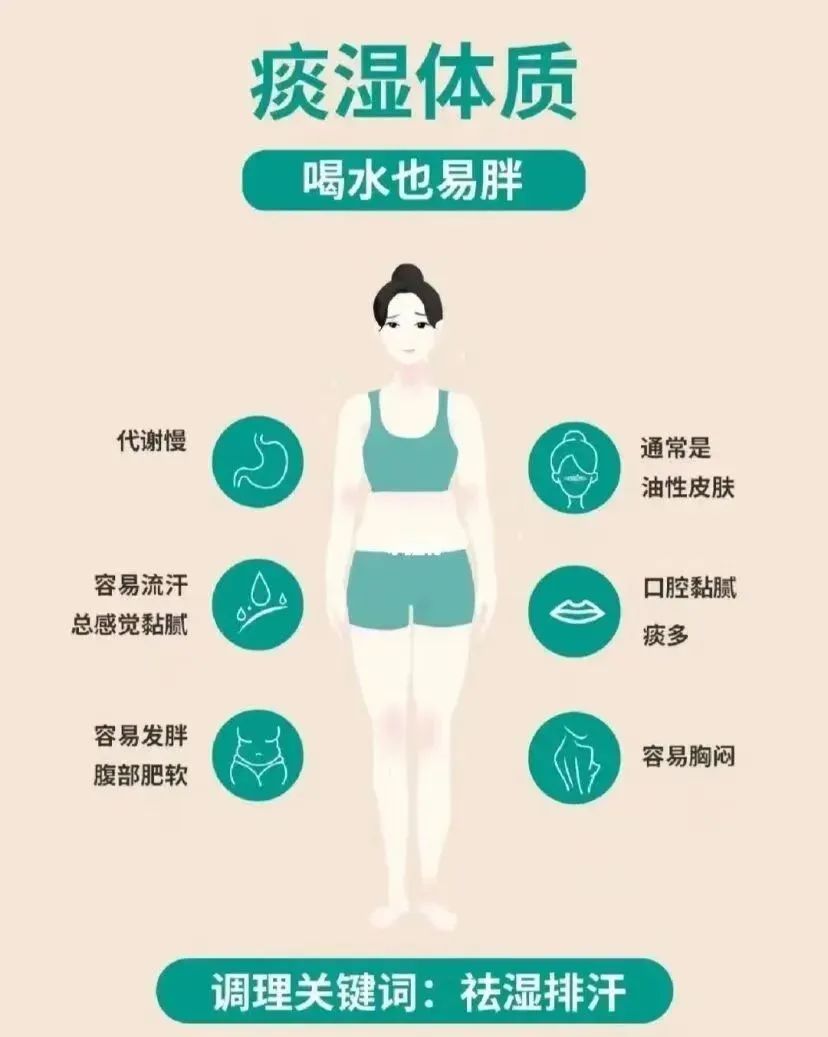
(5) Phlegm-Damp Constitution (Type E) Overall characteristics: Accumulation of phlegm and dampness, primarily characterized by obesity, fullness in the abdomen, and sticky tongue coating. Body characteristics: Generally overweight, with a soft abdomen.
Common manifestations: Oily skin on the face, excessive sweating, chest tightness with phlegm, sticky or sweet taste in the mouth, prefers fatty and sweet foods, thick tongue coating, pulse is slippery. Psychological characteristics: Generally mild and steady personality, often patient.
Disease tendency: Prone to diabetes, stroke, chest obstruction, etc. Adaptability to external environment: Poor adaptability to rainy seasons and humid environments.
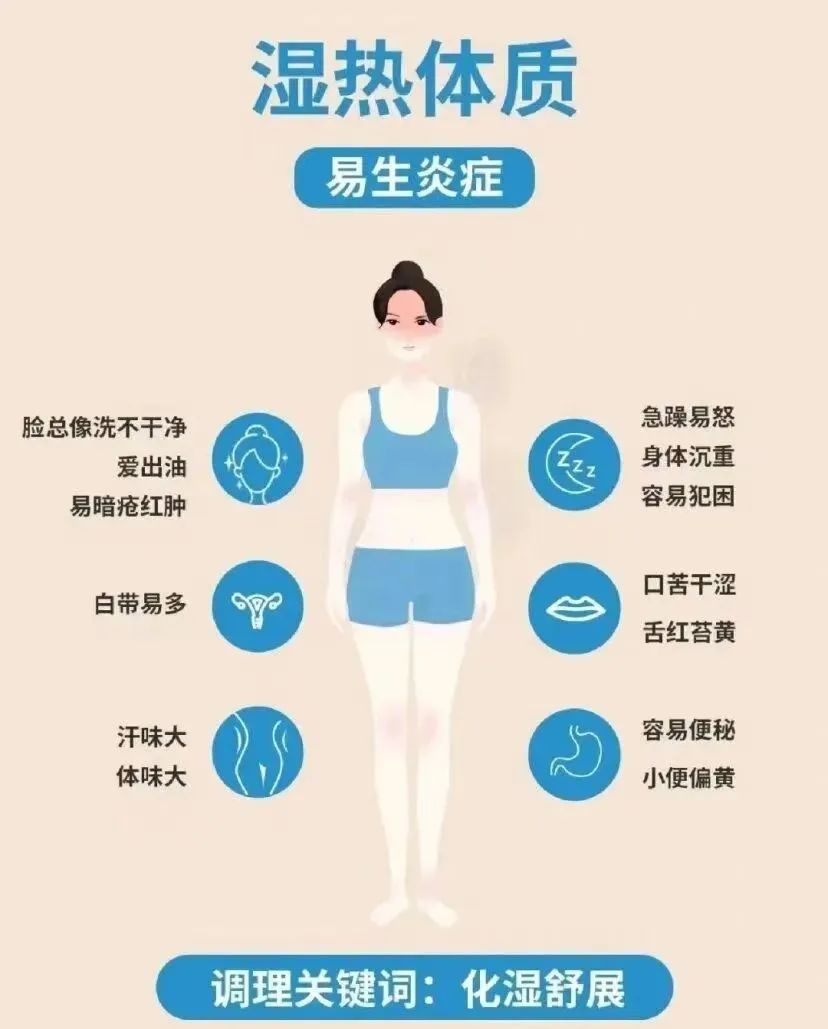
(6) Damp-Heat Constitution (Type F) Overall characteristics: Internal damp-heat, primarily characterized by oily skin, bitter mouth, and yellow sticky tongue coating. Body characteristics: Generally moderate or slightly thin.
Common manifestations: Oily skin, prone to acne, bitter mouth, heavy body, sluggish bowel movements, short yellow urine, men prone to dampness in the scrotum, women prone to increased vaginal discharge, tongue is red with yellow sticky coating, pulse is slippery and rapid.
Psychological characteristics: Prone to irritability and anxiety.
Disease tendency: Prone to sores, jaundice, and heat-related conditions. Adaptability to external environment: Poor adaptability to humid and hot climates, especially in late summer and early autumn.
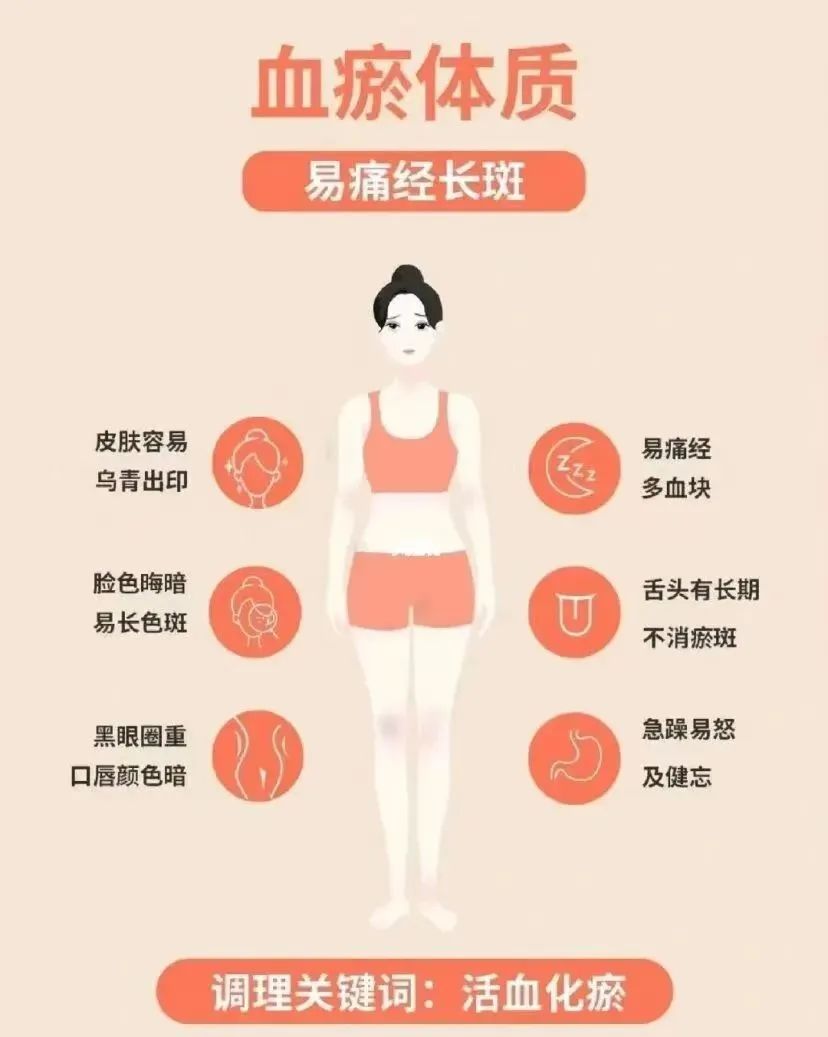
(7) Blood Stasis Constitution (Type G) Overall characteristics: Poor blood circulation, primarily characterized by dull complexion and purple tongue. Body characteristics: Can be either thin or fat.
Common manifestations: Dull complexion, pigmentation, easy bruising, dark lips, purple tongue or spots, purple veins under the tongue, pulse is choppy.
Psychological characteristics: Prone to irritability and forgetfulness.
Disease tendency: Prone to pain syndromes and blood-related conditions. Adaptability to external environment: Poor tolerance to cold.
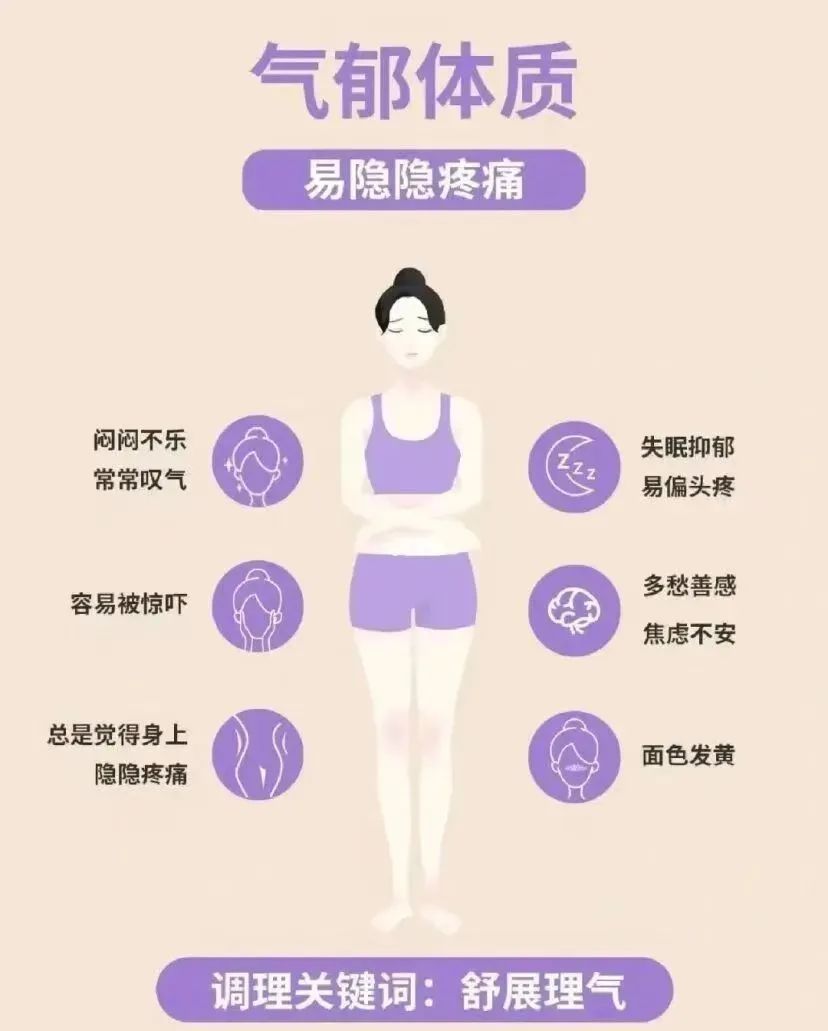
(8) Qi Stagnation Constitution (Type H) Overall characteristics: Qi stagnation, primarily characterized by depression, anxiety, and emotional fragility. Body characteristics: Generally thin.
Common manifestations: Depressed mood, emotional fragility, unhappiness, tongue is pale red, thin white coating, pulse is wiry.
Psychological characteristics: Introverted, unstable, sensitive personality. Disease tendency: Prone to organ dryness, plum pit qi, lily disease, and depression. Adaptability to external environment: Poor adaptability to mental stimuli; sensitive to rainy weather.
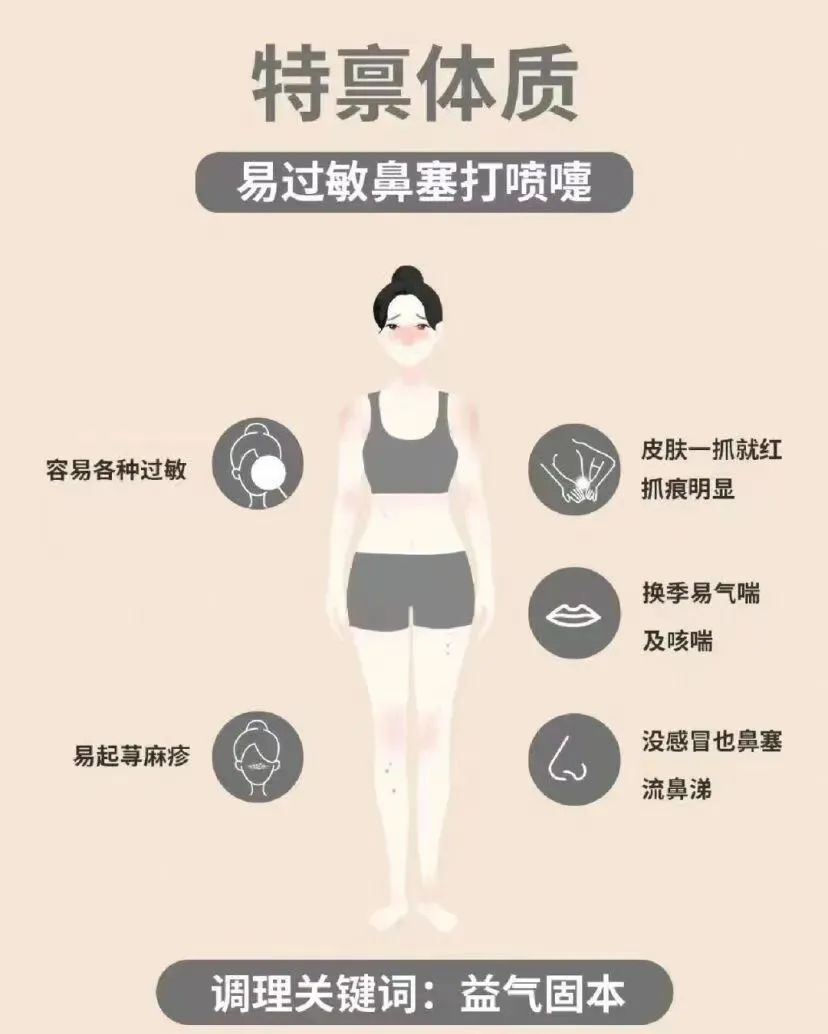
(9) Special Constitution (Type 1) Overall characteristics: Congenital abnormalities, primarily characterized by physiological defects and allergic reactions.
Body characteristics: Generally no special features for allergic constitution; congenital abnormalities may present as deformities or physiological defects.
Common manifestations: Allergic individuals often experience asthma, hives, throat itching, nasal congestion, sneezing, etc.; those with hereditary diseases may show vertical inheritance, congenital, or familial characteristics; those with fetal transmission diseases may exhibit maternal influences on fetal growth and related diseases.
Psychological characteristics: Varies according to the specific constitution.
Disease tendency: Allergic individuals are prone to asthma, urticaria, hay fever, and drug allergies; hereditary diseases such as hemophilia, congenital mental retardation, etc.; fetal transmission diseases such as five delays (delayed standing, walking, speaking, teething, and development), five soft conditions (soft head, neck, hands and feet, muscles, and mouth), cranial deformities, fetal fright, and fetal pain. Poor adaptability to external environments, prone to chronic diseases.
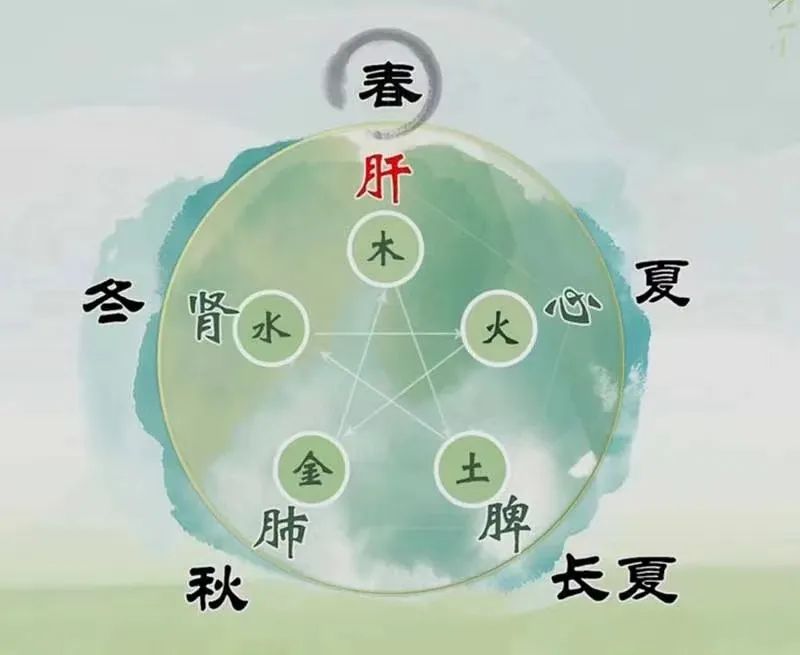
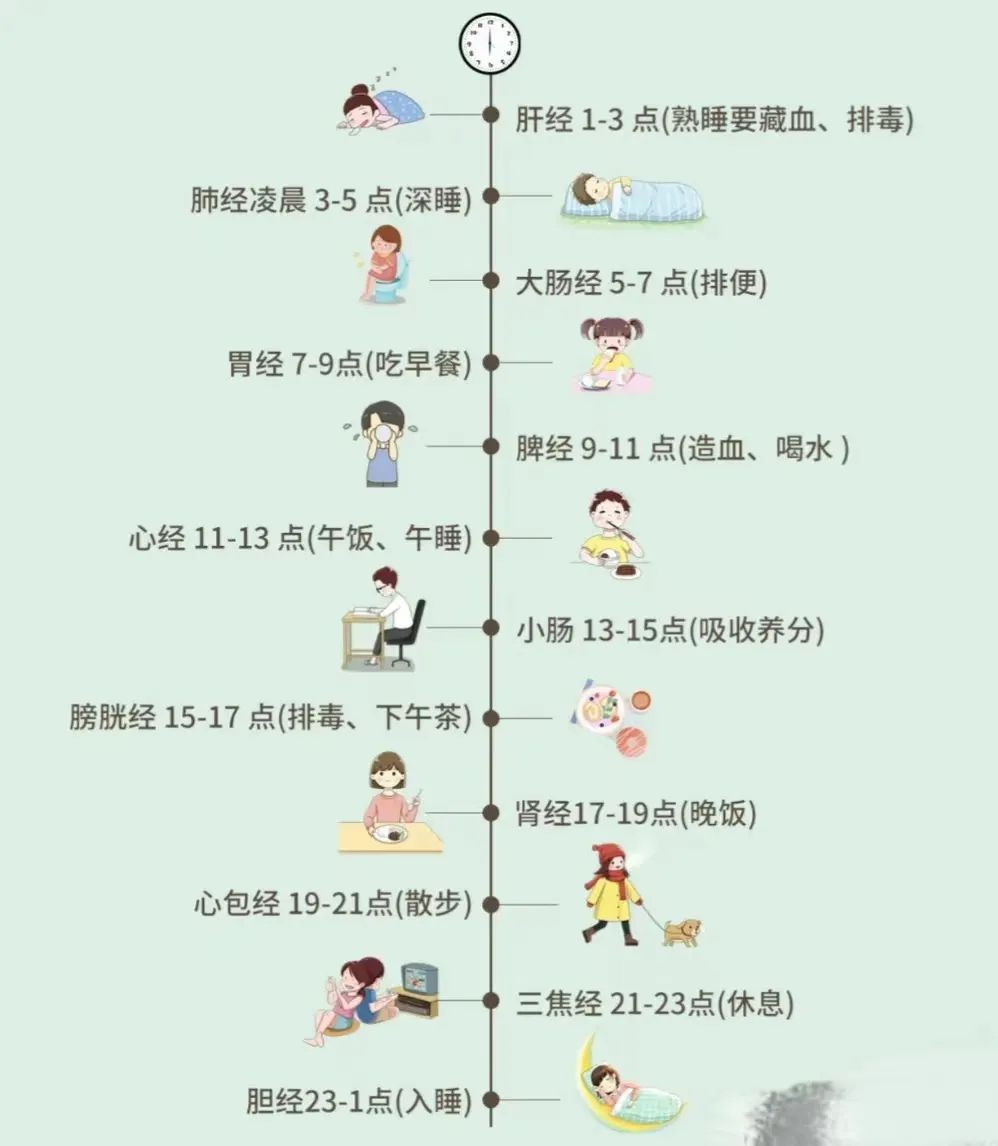
Source: Summary of Knowledge on Chinese Medicinal Herbs


